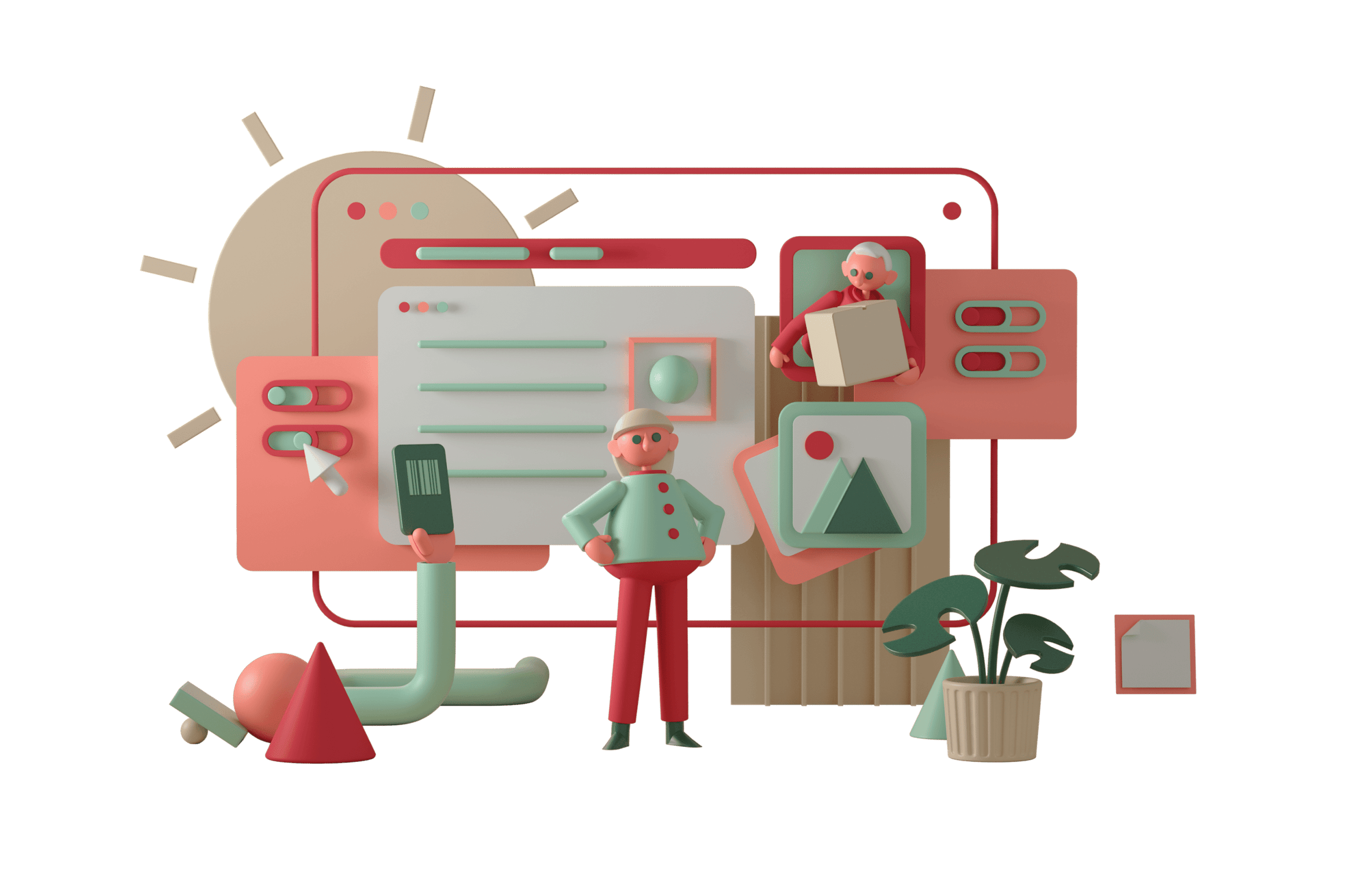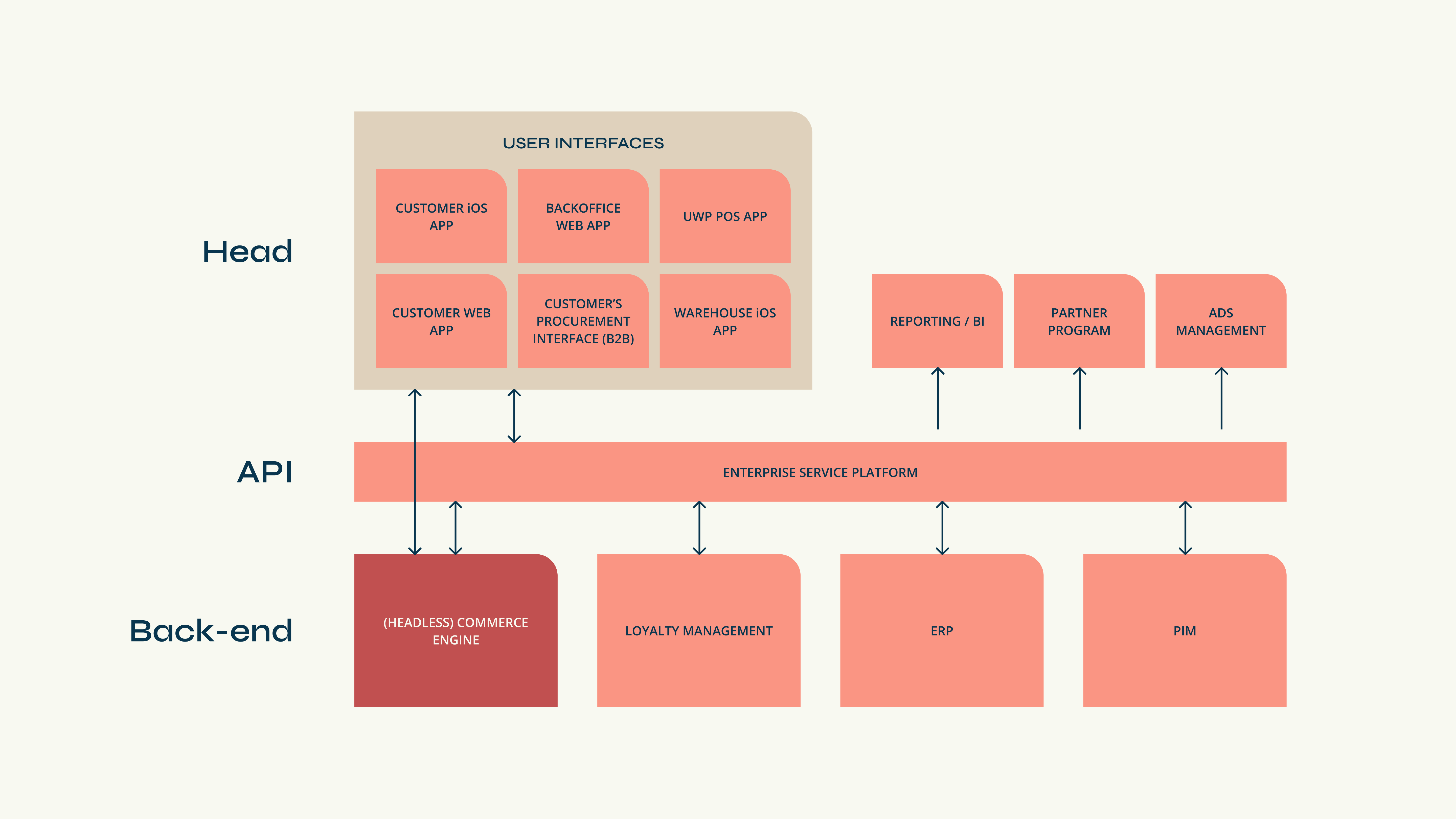Many of us have probably made online purchases so impulsive that we sent the Consumer Authorities a silent thank you for the right of withdrawal. But despite what it may sound like, headless commerce has little to do with headless online shopping. So, what is this concept everyone is talking about, and why should we care?
Let's first look at the term headless. Headless is the name of an architectural principle where the back end – the part or parts of the system responsible for data and business logic – doesn't have a presentation layer. Instead, features and data are made available in APIs (application programming interface – in short, standardized ways for applications to talk to each other). Therefore, the term API first is also often used to describe the idea of building and developing back-end functionality primarily to meet a specification of how the API should work, rather than how the graphical user interface (GUI) should behave.
This way of thinking is in many ways driven by the extensive business digitalization that we have all been through in the last 15 years – whether we have been at the forefront riding the top of the wave or have been swept away by the current, bewildered, and powerless.
As e-commerce and other digital services have gone from being a marginal side business to becoming the primary delivery model for most companies that aim to be part of the battle for customers, the associated technical solutions have also grown in significance, size, and not least complexity. The early beginnings of the "online store" or "website" were often a stand-alone publishing solution where both input and output were handled manually by one or two dedicated enthusiasts. But today's solutions are often almost living organisms that process large amounts of data and run through massive revenues at a tremendous speed.
"The understanding of how important web solutions are has become greater in all parts of the business organization. In the wake of that understanding, there is often a tidal wave of requests for insight, reports, and not least needs."
A tidal wave of needs
At the same time, the understanding of how important web solutions are has become greater in all parts of the business organization. In the wake of that understanding, there is often a tidal wave of requests for insight, reports, and not least needs. Everyone in the business responsible for a KPI sooner or later becomes aware of the relationship between the company's online presence and their own goals – probably to the delight and frustration of the company's Ecommerce Manager, Head of Marketing, Chief Digital Officer or whoever may be responsible for turning strategy into a digital customer experience.
More and more content must be produced and published at an ever-increasing pace and with stricter quality requirements. The need to eliminate manual processes arises. Requirements for new functions and design changes are continuous, and they must be delivered quickly to the market, measured, and re-iterated frequently – in line with modern frameworks.
The value of inherently integration-friendly business systems is best understood in light of such complex needs. One of the most important advantages of a headless or API-first approach is that integration friendliness. A leading design principle is that data and functions must first and foremost be exposed in APIs.
New opportunities to create business value in ways that are different than initially intended tend to emerge over time. With easier access, the threshold for taking advantage of such opportunities will be lower. This is one of the reasons why we often expect a shorter time to market with new initiatives, with headless solutions.
Frictionless and easy
For example, let's say the marketing department wants to retrieve order and shopping cart data from the online store to the email marketing system to set up retargeting and transaction-based dialogs. A headless commerce solution will typically already have existing APIs for orders and shopping carts that have finished testing and production and have accompanying documentation. At best, these cover everything needed, and the new consumer can start working from the sidelines immediately and with minimal support.
Or you can imagine a B2B scenario where large customers want to retrieve products with prices and availability directly into their own purchasing system and place orders from there. Again, this is something a headless commerce solution naturally supports. The purchasing system will probably be able to use the same APIs that the online store's own web app already uses, more or less unchanged.
This way, one well-thought-out headless commerce solution can support several different ways of delivering the same data, functions, and services. If you already have a well-developed online store on the web and, for example, need to offer a mobile app with some of the store's functionality, it is a lot quicker with a headless solution. Since the services are already there, the app developers, in principle, only need access and documentation to get started. Typically, the APIs are also structured in a way that makes it easy to build the app step by step, one service at a time.
This separation of the front end from the back end helps remove friction from the design and development cycle. It eases the need for coordination and allows different types of resources to work more independently. In other words, a headless commerce solution facilitates smooth development and is a great competitive advantage for everyone who works with customer experiences to have flexible processes as a foundation.
Want to know more?

